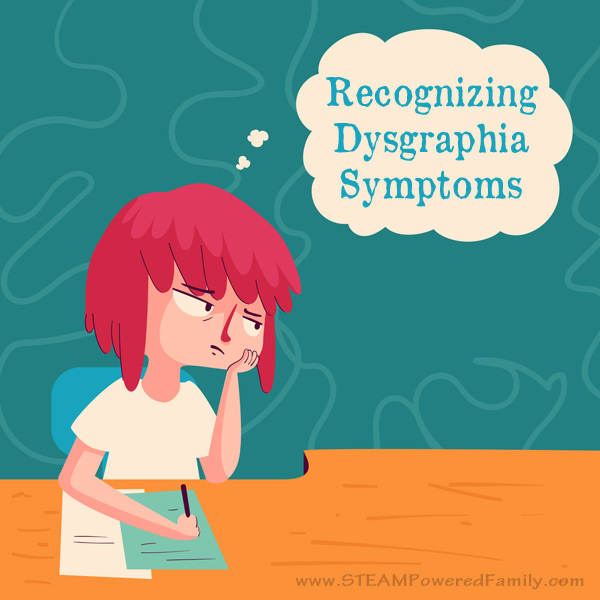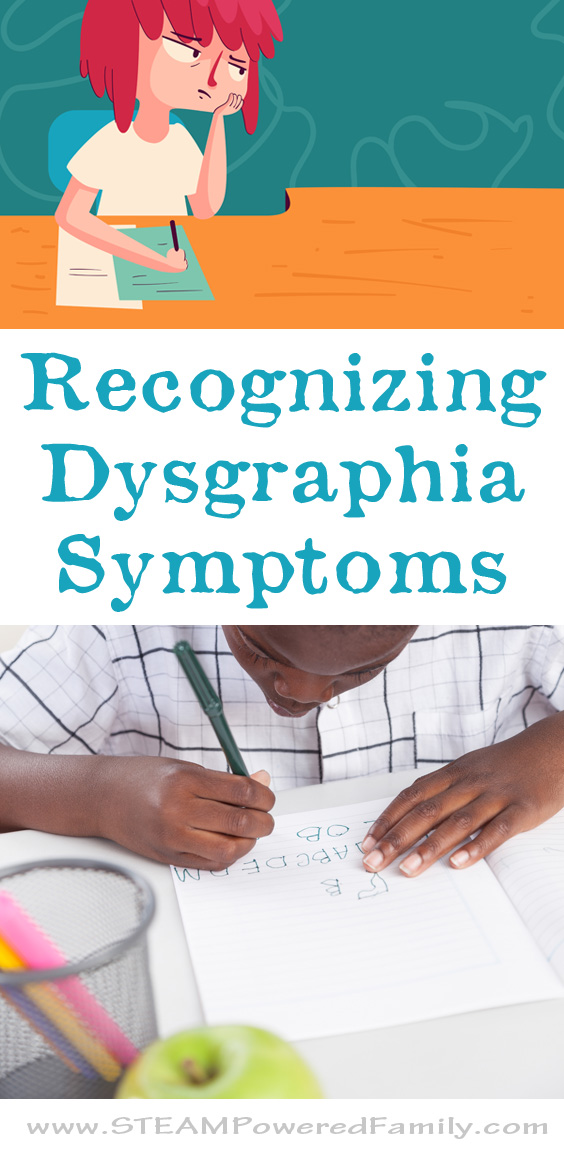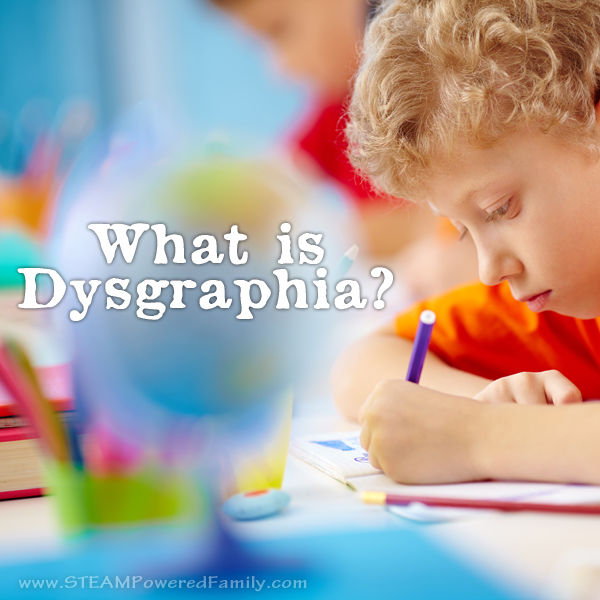Recognizing Dysgraphia Symptoms For Parents and Educators
Recognizing dysgraphia symptoms for parents and educators. Dysgraphia symptoms involve struggles with writing, but are much more than just messy writing. Learn the signs and symptoms to help these children excel.
So what is dysgraphia? Dysgraphia is a learning disability that impacts the ability to write. Many people refer to it as messy writing, but there is a lot more to it. Recognizing dysgraphia symptoms is not always easy for parents and educators. It can be hard to know what are normal developmental variations and when it becomes cause for concern. In general, if a child is exhibiting the majority of these symptoms and continues to struggle and fall behind their peers, then it is time to look into a possible diagnosis of dysgraphia.
Writing is a very complex task. It involves fine motor, sensory processing along with the ability to create, organize and express ideas. On top of that the writer must also recall proper spelling, grammar and syntax rules, and apply them appropriately. When you think about what is truly involved in handwriting, it becomes easy to see how struggles with certain skills can affect the entire process.
Writing is truly a multi-faceted skill that requires a number of systems to work in unity in order to achieve success.
The signs of dysgraphia can be tricky to identify. There are so many different parts of the process that can be weak causing different impacts on the writing process, but as a general idea look for struggles in these areas:
Dysgraphia Symptoms
Significant difference in quality and understanding of ideas when written versus spoken. They can be extremely eloquent and well versed in a subject, but if asked to write on the same subject, they struggle to convey their knowledge or may find themselves unable to write at all. This can be especially baffling for educators, who listen to a child explain something, but then if they put a pencil in the child’s hand and ask them to write what they just said, the child will have great difficulty.
A tight and awkward pencil grip and body position while writing. Hunching, curling the arm, fingertips changing color due to immense pressure, etc.
Shaping letters in strange ways, or starting them in awkward places, or varying sizes of letters. People with dysgraphia often struggle with capital versus lower case letters, they start and finish their letters in non-typical places, and they struggle to “stay in the lines”.
Illegible and messy handwriting. This is the most common dysgraphia symptom.
Orienting letters wrong, like writing letters backwards or inverting them. He doesn’t do it as much now, but when he was younger our son would often mirror write. Which although normal in young writers, it continued beyond the normal stage.
Poor spatial planning on paper. My son really struggles with not leaving enough room for the words on a page. He often starts writing in strange places on the page, and he struggles with forms or worksheets that provide limited space for him to write.
Doing everything possible to avoid drawing and writing tasks. This includes not wanting to do crafts or art.
Complaining about tiredness or pain after even short instances of writing.
Unfinished or omitted words in sentences when writing.
Have difficulty organizing thoughts on paper, but are fine using other mediums. Ask a person with dysgraphia about a subject and they can talk eloquently and with great mastery, but ask them to write down their knowledge and they will find it very difficult to convey even the most basic knowledge on the subject.
Struggles with grammar, punctuation, and sentence structure, even though they are well read. It’s as if their mind is so focused on other things, these rules are completely forgotten in the writing process.
Seems as if their mind is always going a million times faster than their hand.
One of the greatest battles I think parents face with dysgraphia is how difficult it is to get a diagnosis and put a treatment plan into place. There is no simple test for dysgraphia. Instead it is part of a battery of tests and evaluations that eventually lead to a diagnosis. This testing is very expensive though, and we found the school simply did not have the resources or funding to provide comprehensive professional testing for our son.
Testing for a dysgraphia diagnosis:
- Psychoeducational assessments
- Academic assessments focusing on reading, arithmetic, writing and language tests
- Fine motor assessments, specifically around skills used in writing
- Writing sample evaluations
- Testing involving copying designs
It took a very long time and years of advocating to get our son the help he needed. One of the issues we ran into a complete lack of access professionals that were specialized in learning disorders. There were almost no specialists in our area. This can make getting a formal diagnosis extremely difficult, not to mention a lack of supports and services after diagnosis.
If you think your child has dysgraphia prepare for a long battle of advocating.
If I person has dygraphia, does that mean they have dyslexia too?
Absolutely not. In fact, the two rarely seem to go together. It can happen, but if anything, those with dysgraphia tend to be very competent readers, they simply struggle to write out their own words. They are both learning disabilities, but having one rarely means having the other.
Recognizing dysgraphia symptoms can be challenging, but for some parents and educators, reading through the list of dysgraphia symptoms can cause a huge moment of clarity. When I first read up on dysgraphia my son showed every single symptom. Then, when I showed my husband the list of dysgraphia symptoms, he turned to me and said, “I have dysgraphia.” When my son was in school they didn’t have the resources or funding to pursue testing and supports, but they all agreed, he had dysgraphia just based on the symptoms. They didn’t need a professional diagnosis.
If you suspect a child has dysgraphia you can start implementing accommodations and see if they help. My husband grew up before dysgraphia was even a known learning disability, he adapted and figured out ways to get through the system. With a little help, our children can still excel in learning, education and life.
This article is part of the series: What is Dysgraphia?




